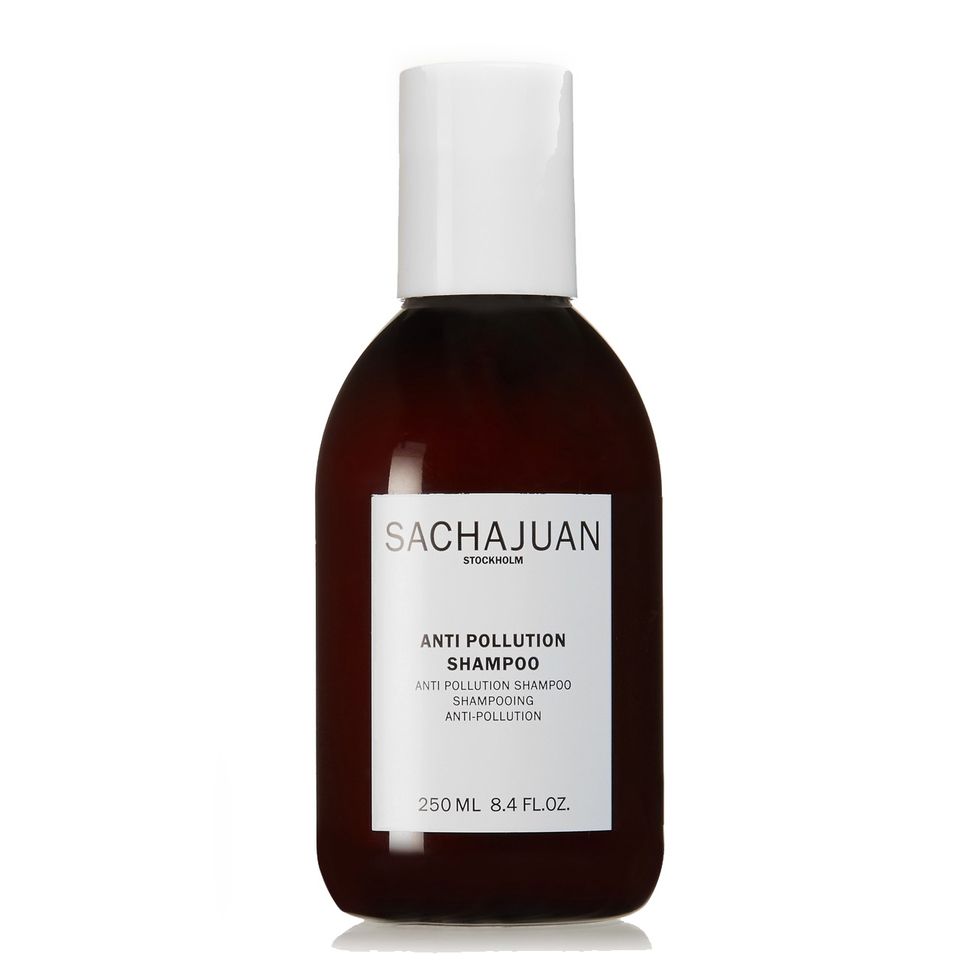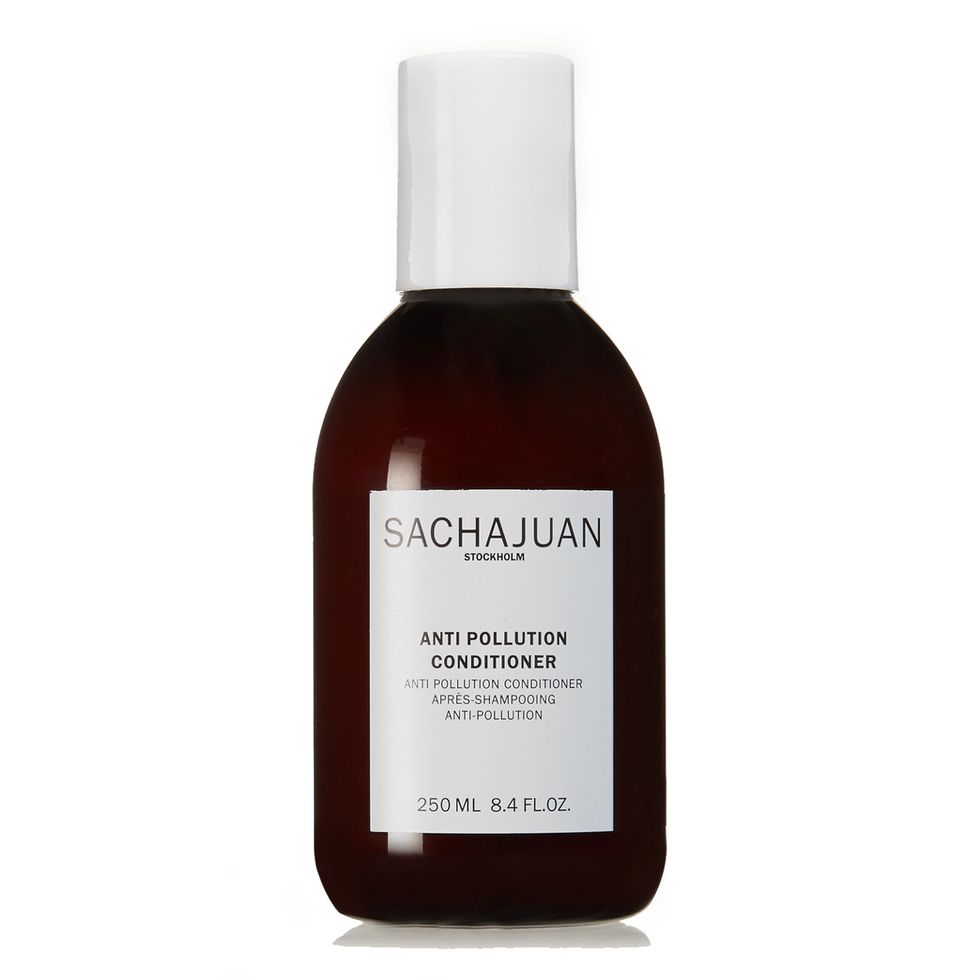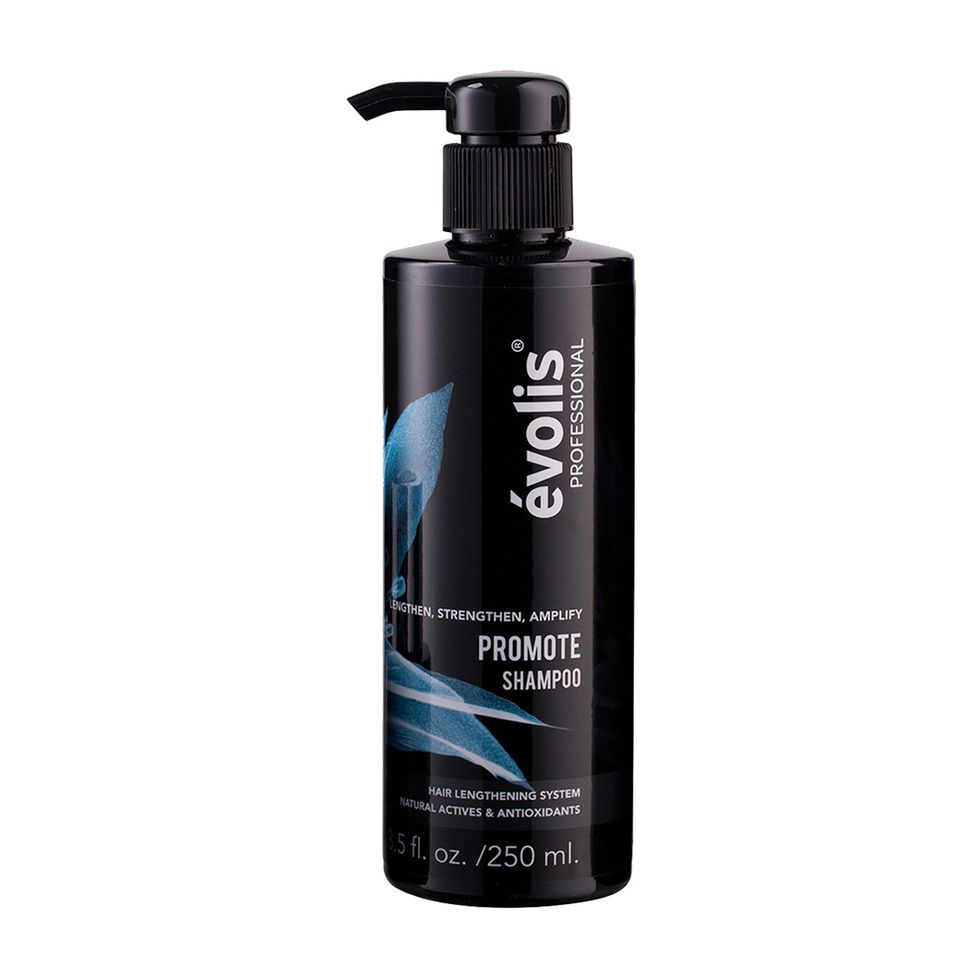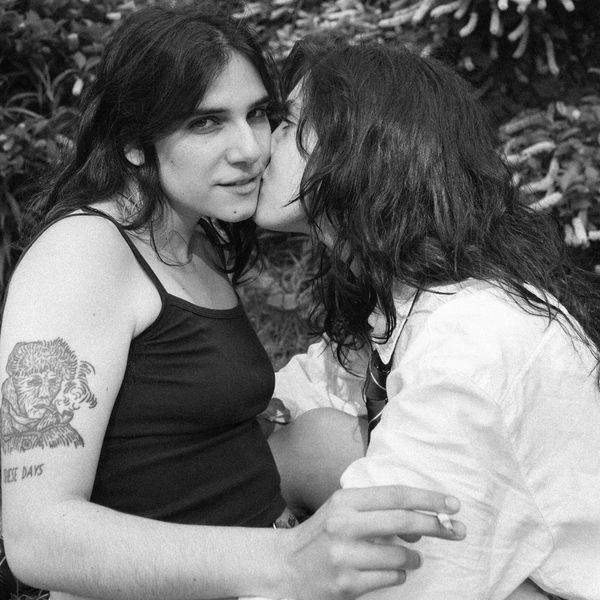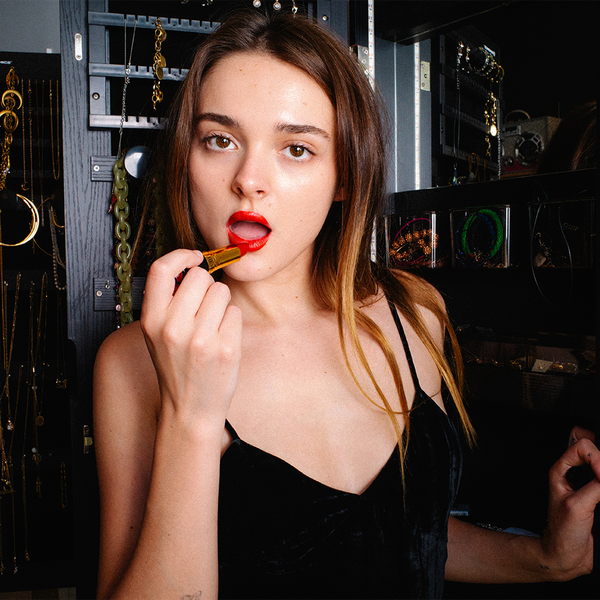Hair Loss Happens—Here’s What You Can Do About It
Experts reveal the potential causes of your thinning hair, plus how to get growth back on track.

These days, there are very few beauty concerns that can’t be fixed within minutes. Tips on everything from acne to thin lips are just one IGTV story away. While hair loss has also come a hell of a long way on the solution front, the feelings of debilitation have not. Beauty is naturally subjective; it’s also deeply personal. Ask anyone who has ever experienced significant hair shedding or straight-up hair loss, and they’ll likely all agree on how stressful, anxiety-inducing, and confusing it can be.
It’s a lot to digest, but getting to the root of what may be causing your particular loss of length and volume, while also formulating a clear plan on how to tackle it (there are plenty of options!), is critical to get ahead of any permanent damage. Two experts, both very well versed in the nuances of scalp health and hair loss—Dominic Burg, chief scientist, hair biologist, microbiologist, and trichologist for Évolis Professional, and board-certified dermatologist Corey L. Hartman, MD, FAAD—break down exactly what’s happening, when to be concerned, and how to reverse the damage both short- and long-term.
The Growth Cycle
To understand how and why our hair falls out, let’s first dive into how it actually grows. Dr. Burg explains that hair loss as a whole is complex and can have a variety of underlying causes. The follicles (or roots) that grow your hair are actually organs. Unlike other organs in our body, follicles grow in a special pattern called the hair cycle. They grow for a long time—approximately seven years—then go into a transitional period of shutdown where growth stops. This is followed by a period of rest where not much is happening for about three months.
After the rest phase, the actual follicle will naturally dislodge from the scalp and fall, generally precipitated by the growth of a brand-new hair in its place. “What is amazing about the process is that the new hairs regenerate from scratch, using special populations of stem cells in the scalp,” Burg explains. The follicles on your head are not synchronized in their cycling, so they luckily don’t all grow and fall at the same time; instead, we lose about 50–100 hairs a day from various parts of our head. When something throws off the process of growth, rest, and shedding, hair loss happens.
Different Types of Loss
The two most common types of hair loss are pattern hair loss, which pros refer to as androgenetic alopecia, and age-related hair loss. Both of these ultimately result from a dysfunction in the hair cycle. The word alopecia can be scary, but it’s simply a medical term for general hair loss—not an illness or disease.
When there are any distinct changes in someone’s hair growth pattern, it can actually cut the hair cycle short, which could mean more fallout, eventually leading to a process called miniaturization, where the follicle and emerging hair shafts shrink and eventually die, meaning no new hairs grow from that specific follicle. In age-related hair loss, the follicles become tired. The stem cells that are usually available for regeneration become less effective and stop regenerating.

Lifestyle Changes
Another common form of hair loss is telogen effluvium. In this scenario, a shock to the system can send a large number of follicles into hibernation all at once. They fall out pretty much at the same time after about three months. So your hair goes from being normal and thick to very thin and in some cases patchy. One of the more common contributors to this type of hair loss is pregnancy.
Hair loss after having a baby, or postpartum hair loss, happens when there’s a hormonal flux from the pregnancy to the birth. During pregnancy, hormone levels soar and stimulate hair growth. Once the child is born, these hormones crash, shocking the hair into the resting phase. It can also happen during a severe illness or injury, stressful and highly emotional events, or even going on an extreme diet. “Most of these scenarios are the result of the body shutting down hair growth when energy is needed for more vital functions or when nutrients are limited,” says Burg. Although it can be very distressing, the good news is that most cases of telogen effluvium usually fully reverse once the stress, illness, or life change ends or gets back to normal. “Once the immune response is controlled, the hair resumes its natural function,” says Hartman.
Styling Stressors
Tight hairstyles like high ponytails, constant slick-backs, braids, and weaves can all cause a type of hair loss called traction alopecia. To break it down: Each hair follicle is connected to a special muscle called the arrector pili. Around this muscle, in a region called the bulge, lives one of the populations of stem cells that are required for hair regeneration. It is thought that repeated traction that puts pressure on the follicle actually separates the muscle from the organ itself, damaging and dispersing the population of stem cells and preventing follicle regrowth.
“By far the most prevalent types of hair loss that I have seen have come to be more closely tied to certain hairstyling practices,” says Hartman. He further explains that central centrifugal cicatricial alopecia (CCCA) is now an epidemic among black women, and some of his colleagues who research this disorder are closer to linking it to the application of chemical relaxers, tension from certain hairstyles, and genetic factors. Hartman says that this is a completely preventable form of alopecia that has no genetic basis at all.
Scalp Conditions
Consider this an important reminder that scalp care is just as important as skin care for your complexion. The scalp is, after all, an extension of the skin on our face, and it should be treated as such. Conditions like dandruff, which you’d assume would lead to hair loss, actually have only a minor impact. The inflammation that dandruff can cause might drive the hair cycle into dysfunction, but it’s usually not significant enough to do so. When it does become dangerous is when it verges on seborrheic dermatitis. The resulting severe inflammation and wounds can cause scarring and hair follicle loss. It’s best to see a dermatologist about options to keep dandruff under control if it starts worsening.
The Pollution Plight
The conversation surrounding pollution and aging skin has now expanded into hair. While it’s still being researched, Burg says that “low-level inflammation and the buildup of molecular by-products such as reactive oxygen species and protein debris contribute to the aging process throughout the body, including hair.” Addressing this low-level inflammation and free radicals on the scalp with products like Sachajuan Anti Pollution Shampoo and Anti Pollution Conditioner can have the same positive effects that anti-pollution skin care has on our face.
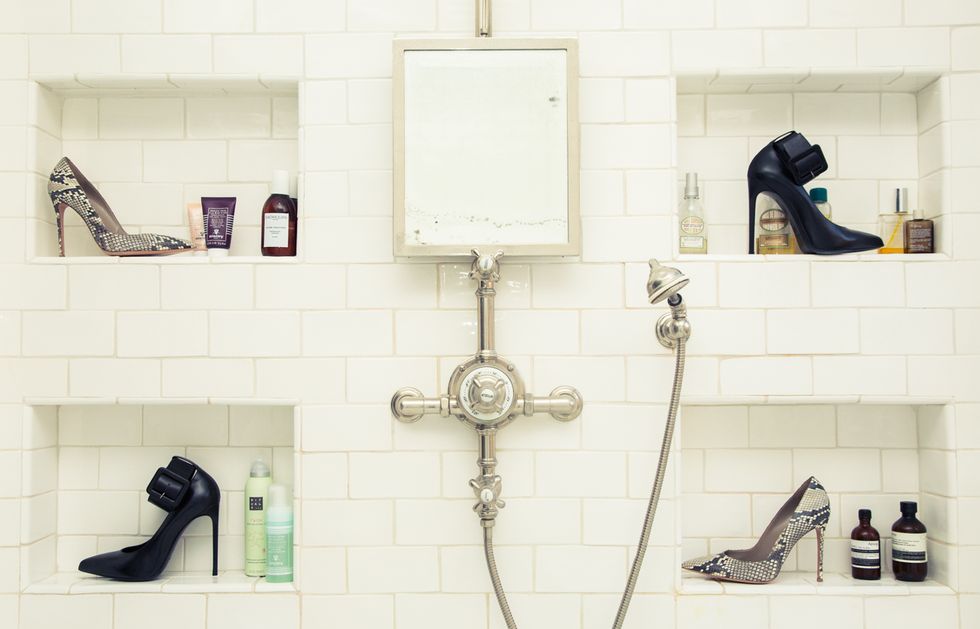
Level Set Shampooing
Balance is needed with just about everything. So while you should still shampoo and keep dandruff in check, you don’t want to go overboard. Frequent washing of the scalp with harsh cleansers can upset the microbiome and lead to scalp problems. In short: The skin on the body contains billions of good bacteria from around 1,000 different species that are naturally beneficial—this population as a whole is known as the microbiome. It’s what helps maintain the skin pH and prevent bad microbes from taking over the skin by competing for nutrients. Too much of the wrong bacteria or fungi can lead to infection or inflammation and exacerbate any hair cycle issues.
While over-washing can be a problem, particularly if you use powerful and harsh cleansers, a good, gentle cleanse of the scalp two to three times a week is often needed for removing excess sebum and unblocking pores. If your hair is on the drier side and you don’t wash as often, stick with a once-a-month deep clean. “Follow up with a hydrating, silicone-free conditioner or a nourishing hair mask to maintain moisture and take care of the cuticles,” suggests Burg. When conditioning, be sure to treat only the mid lengths and ends, particularly if you have an oily scalp type, and avoid conditioners that have silicones. Over time these can build up on the scalp and can prevent the skin from breathing.
Also be wary if dry shampoo is your go-to refresher in between washes, as overuse without regular, gentle cleansing of the scalp can lead to blocked pores, scalp acne, and potentially, if it becomes severe, scarring and follicle loss.
A Case for Co-Wash
So what about cleansing conditioners and the no-poo method? Many people, particularly curlier hair types that tend to get drier faster, skip shampoo altogether and instead cleanse with a more hydrating formula made up of more conditioner than cleanser. You’d think these were better options than traditional shampoos, but not necessarily. Both Hartman and Burg agree that these just aren’t enough to keep the scalp in optimal health. “You wouldn’t go to bed without taking off your makeup, so why wouldn’t you regularly cleanse your scalp of styling residue, excess dry shampoo, and naturally shed skin?” Burg asks. A once-a-month clarifying wash with a gentle shampoo like Évolis Promote Shampoo is sufficient to help keep the scalp in good shape.
Brush Basics
The myths around hair brushing and circulation-boosting methods are pretty conflicting. Everything from caffeine to horsetail is purported to promote hair growth by increasing blood flow. Burg says that a lot of it is just hype. It’s just massaging the scalp, which may be a great option for reducing stress, but there’s no evidence to suggest that it can increase hair growth. It’s actually quite the opposite in some cases. Vigorous brushing or combing can dislodge fragile hair, particularly for those who already have existing hair loss issues.
The Red Flags
Now that you have the practices down, both good and bad, let’s talk about when you should look into treatment options. Losing 100 hairs a day is perfectly normal. Anything more than this for extended periods of time is when you should raise a brow. Of course most people won’t count the hairs on the floor or in the tub, so some good signs to look out for are a thinning ponytail, loss of volume overall, or the inability to grow hair past a certain length. These are all sure signs of hair cycle dysfunction, particularly hair cycle shortening.
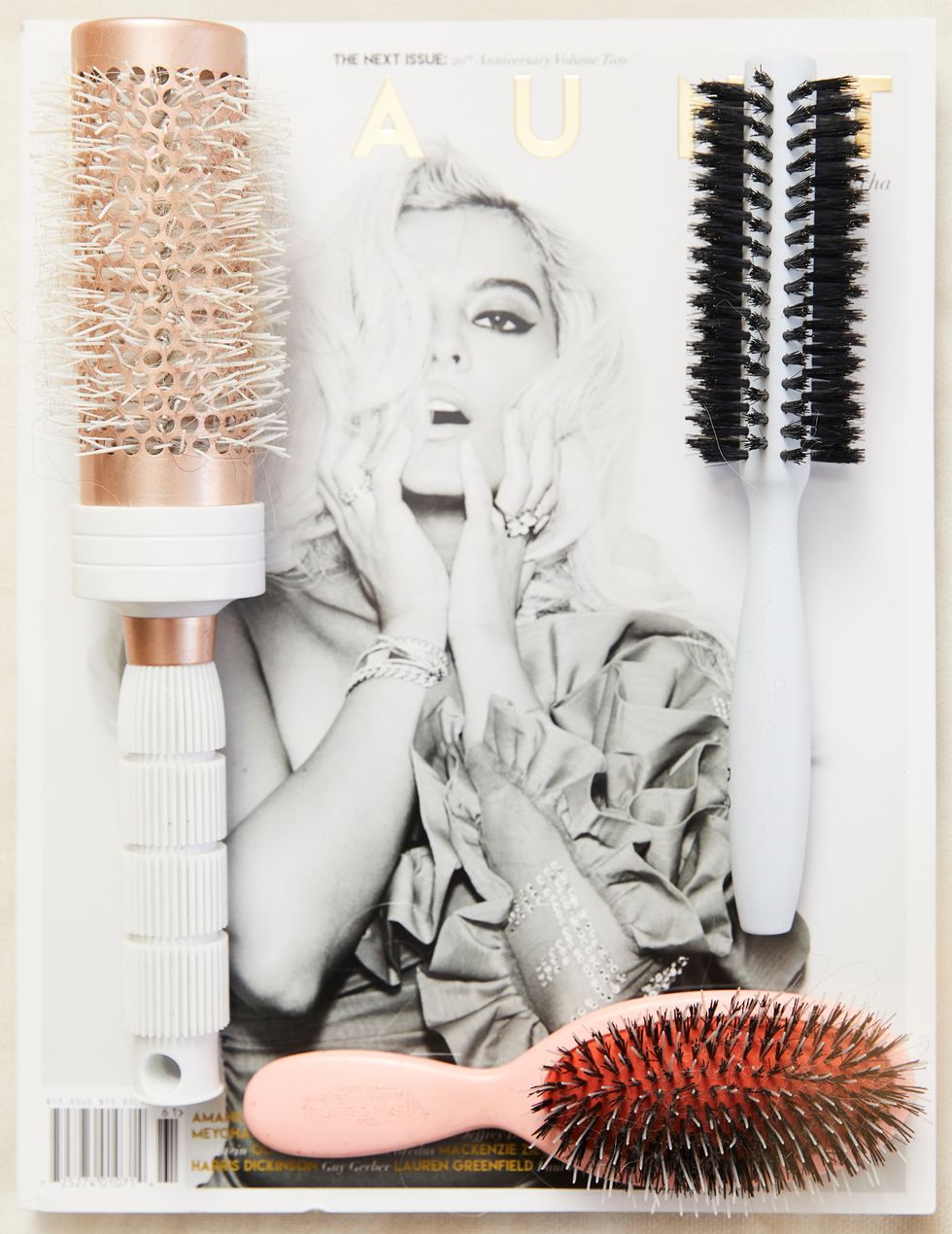
A PRP Plan
Early intervention is extremely important when it comes to fighting hair loss and thinning. Most people start looking for solutions when they’ve already lost 50 percent of their hair follicles. Platelet Rich Plasma (PRP) has quickly become one of the go-to methods for treating hair loss. While natural ingredients and treatment are abuzz, Hartman says that reversing hair loss doesn’t get any more natural than using a patient’s own blood products as a treatment.
The PRP component of our blood is rich in a number of proteins that act as growth factors, usually affecting wound repair, healing, and regeneration. For hair loss, the growth factors in PRP help boost the growth of hair follicles that are going through the miniaturization process. The growth factors may also help the follicles enter into the anagen growth phase of the hair cycle. The boost provided by the growth factors in PRP can help kick-start sluggish or dysfunctional follicles to enter anagen, grow faster, and produce thicker hair.
The process is done in the same way as a PRP facial treatment—blood is drawn and spun at high speeds in a centrifuge to isolate the platelets (small components of blood usually involved in clotting and wound repair), which are then injected directly into the scalp.
Strand Supplementing
One of the more popular hair-growth trends of late has been supplements like biotin and prenatal vitamins. Pills and powders can provide an extra nutritional boost, especially if there are any existing deficiencies in your system from an illness or a restricted diet. However, if you do eat well and are healthy, then these additions are likely not going to do much for your hair since, as Burg mentioned, hair growth is affected when we are nutrient-restricted. Make sure you’re getting zinc and B vitamins, as well as C, E, and iron from your diet, as these are essential for strong and flourishing hair.
Coil Cocktailing
In many cases, doctors like Hartman treat hair-loss patients with a combo of options that include anything from PRP and supplements like Viviscal Pro, Nutrafol, and Glytone’s Anacaps, to oral and topical prescriptions of minoxidil, spironolactone, and finasteride.
Hartman also disputes the myth that hair can become dependent on minoxidil. Hair can’t actually become immune to it. “Like any other chronic skin condition, there is no cure for many forms of alopecia. While topical and oral minoxidil are effective treatments, they don’t cure the disorder; they treat it,” says Hartman. In order to see the effects of it, you have to use it consistently, but if you stop, for whatever reason, all of your hair won’t fall out. “What will most often happen is that your body will return to the initial state of affairs prior to starting the medication, and the patient will see the same signs and symptoms start to reappear that led them to treatment in the first place,” Hartman adds. Reminder: It’s always best to see a doctor before starting on any treatment plan.
Quick Fixes
Getting back to a healthy hair thickness takes patience and a least a few months of consistent treatment. While you wait it out, there are a few options to help camouflage any sparse spots. Add volume at the crown where thinning may be more visible using T3 Volumizing Hot Rollers Luxe. Or try temporarily bulking each strand with a texturizer like Oribe Serene Scalp Thickening Spray. Just make sure that whatever you’re using doesn’t impact the underlying causes of hair thinning, and keep these as short-term options while you’re getting to the real root of the problem.

